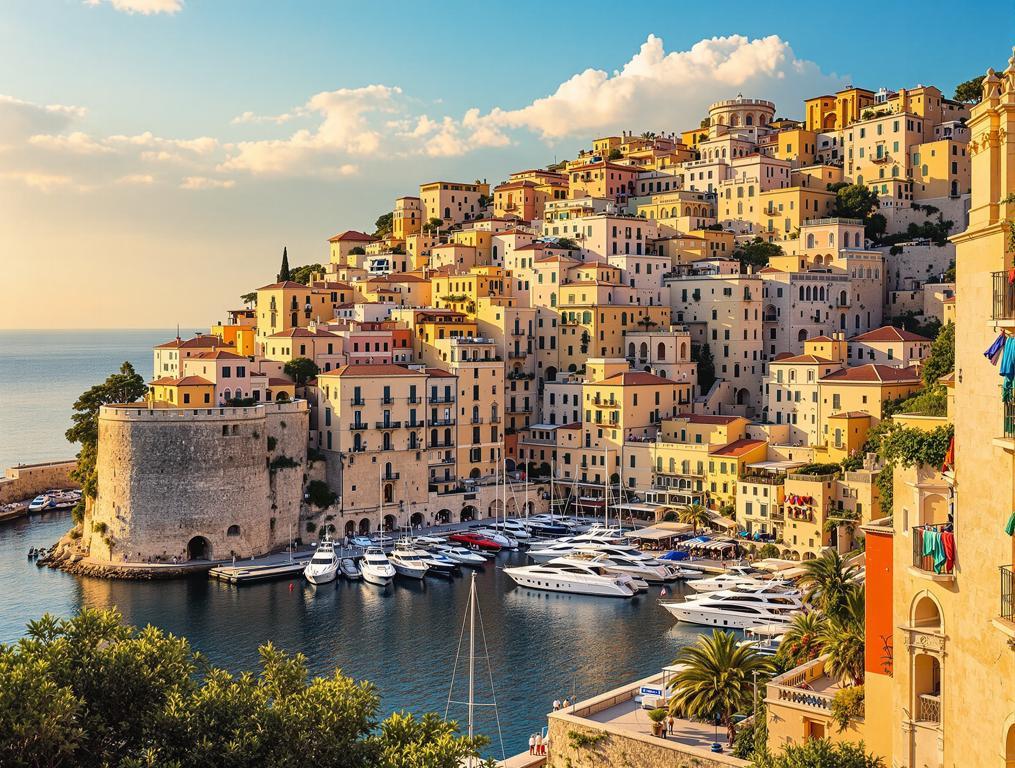The late afternoon sun casts a honeyed glow across 0.9 square kilometers of densely packed limestone buildings as I step off the ferry into Cospicua. With 5,657 residents squeezed into this compact fortress city, I’m immediately struck by how the ancient dockyard – once Malta’s maritime heartbeat – is transforming before my eyes. Industrial cranes that once launched naval vessels now hover over luxury yachts, their shadows stretching across waters where British warships once anchored. This is Malta’s best-kept secret: a shipbuilding hub reborn as a marina while preserving its soul.
From Military Dockyards to Mediterranean Marina: A Hidden Transformation
Cospicua (pronounced kos-PEE-kwa) forms part of Malta’s historic Three Cities, yet receives a fraction of the tourists who flood into nearby Valletta. The difference is immediately apparent – here, laundry still hangs from baroque balconies, and children play football against 17th-century fortification walls.
“The dockyards shaped generations of families here,” explains a silver-haired resident watching the marina construction from his doorstep. “Now we’re seeing its third life – first the Knights built galleys, then the British their warships, and now it welcomes pleasure craft.”
This transformation began in earnest around 2017 but has accelerated dramatically in the past two years. The Cottonera Waterfront project has preserved industrial elements while creating modern amenities – old warehouse buildings now house boutique hotels and craft workshops.
“We chose to dock here instead of crowded Valletta. In the evening, we walk from our yacht to local restaurants where the owners remember our names. You can’t find this authenticity in the tourist harbors.”
The marina development sits within the imposing Firenzuola Fortifications, built in 1638 to protect the dockyard from naval attacks. These massive walls, combined with the Cottonera Lines from 1670, create a layered defense system that gives Cospicua its distinctive terraced appearance.
Density and Authenticity: Malta’s Most Compressed History
Walking through streets barely wide enough for a small car, I’m struck by Cospicua’s remarkable population density – 6,285 people per square kilometer. This makes it even denser than Valletta, yet without the cruise ship crowds or souvenir shops.
Sarah captures photos of neighbors chatting across balconies in the golden hour light, exchanging the traditional Cottonera greeting: “Mela, kif int?” (So, how are you?). The local dialect here has distinctive Sicilian influences, a linguistic reminder of Malta’s complex heritage.
At the Bir Mula Heritage Museum, housed in a 16th-century Knights’ lodge, I discover artifacts from the dockyard’s industrial past. Most compelling are the wartime photographs showing the devastation from World War II bombing, when Cospicua endured some of Malta’s heaviest raids.
The Church of Our Lady of the Immaculate Conception survived these bombings despite taking a direct hit – a miracle locals still recount with pride. Inside, a painting attributed to Polidoro Veneziano hangs in remarkable condition, seemingly protected by divine intervention.
What the Guidebooks Won’t Tell You
To experience Cospicua like a local, arrive via the €1.50 ferry from Valletta rather than the tourist boats. The service runs until 7:30pm in summer, allowing you to witness the marina in golden evening light when day-trippers have departed.
The best views come from the Gardjola Gardens, a lesser-known waterfront park with watchtowers offering panoramic harbor vistas. Visit between 4-6pm when locals emerge for evening passeggiata (strolls) and the light turns the limestone walls to gold.
For authentic Maltese cuisine, skip the waterfront restaurants and head to Triq San Pawl (St. Paul Street) where family-run establishments serve ftira (Maltese bread) with local tuna and tomatoes – the traditional dockworker’s lunch that fueled generations of shipbuilders.
As Emma and I watch a luzzu – traditional fishing boat with painted eyes on its prow – navigate between modern yachts, I’m reminded why I travel. Cospicua represents the perfect balance: a living community embracing change while honoring its past. Like medieval French villages with artisan revivals, this maritime metamorphosis resembles how Penang’s heritage transformation blends historical infrastructure with contemporary function.
While Cospicua represents Malta’s dense urban heritage, elsewhere the country offers dramatic contrasts like Malta’s uninhabited Filfla island just 5 kilometers offshore. But here in this compact fortress city, I’ve found the authentic Maltese rhythm that beats beyond the tourist brochures – a shipbuilding heart finding new purpose without losing its soul.
